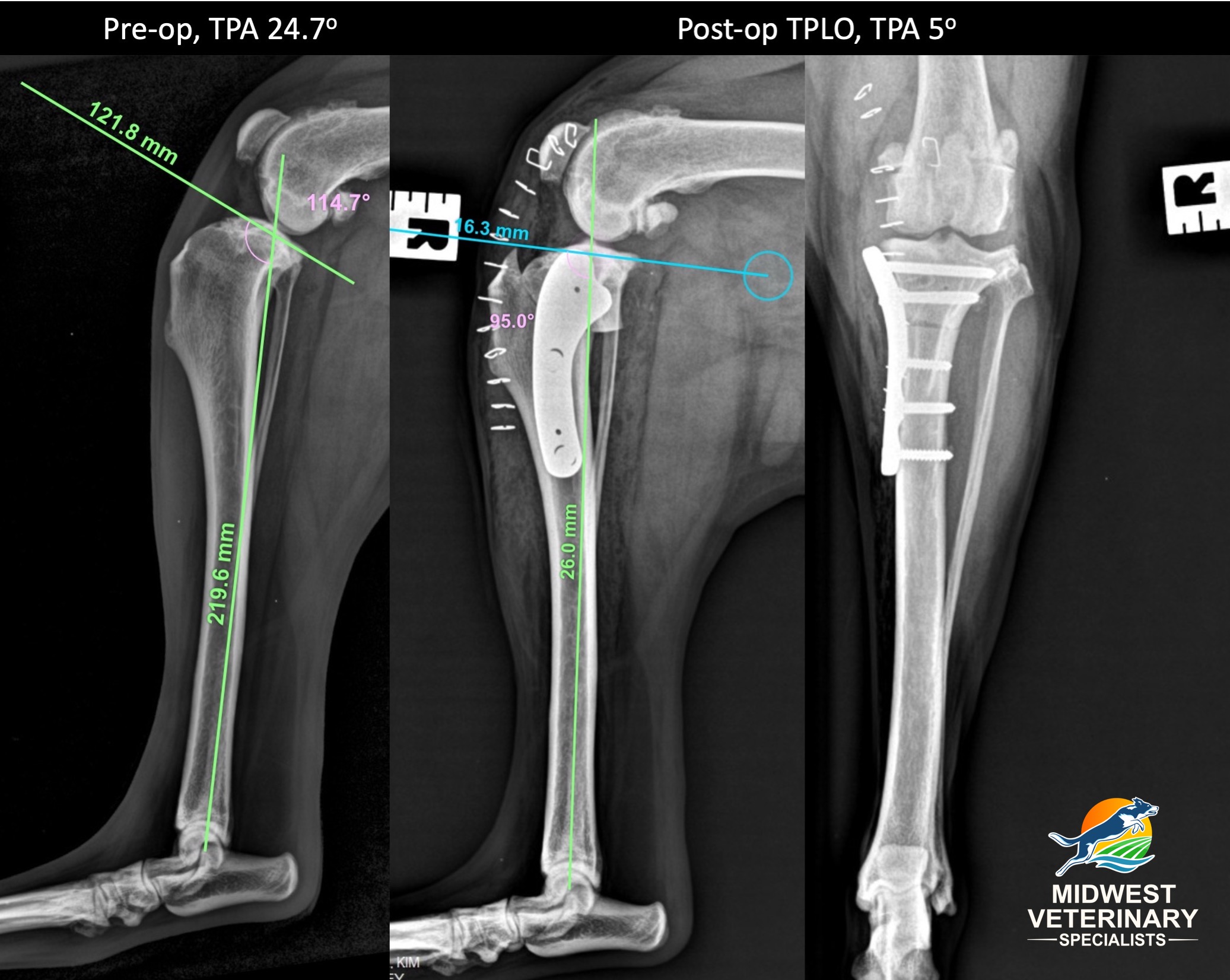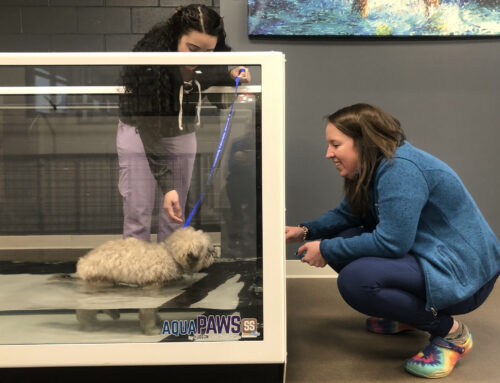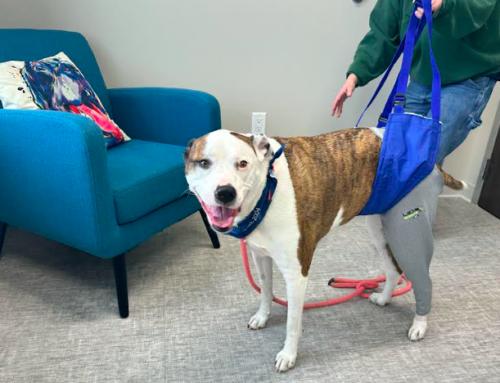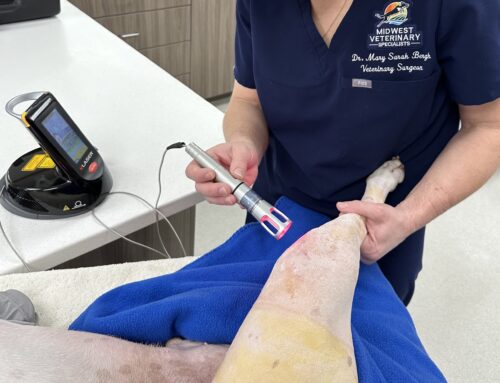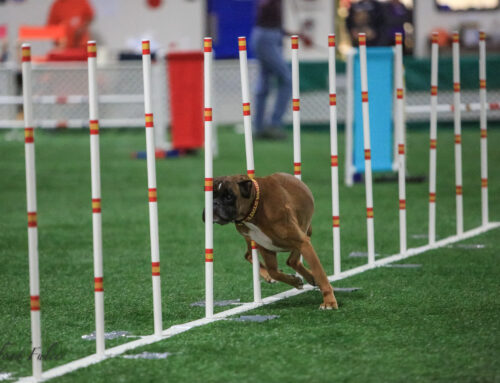Tibial plateau leveling osteotomy (TPLO) is a surgical treatment option for dogs suffering from cranial cruciate ligament (CCL) rupture, which is the most common orthopedic problem in dogs. If your dog has been diagnosed with this condition, you are likely considering a treatment approach that will return your dog to their normal activity level as soon as possible. Our Midwest Veterinary Specialists team would like to help by providing information about the TPLO surgery, to help you make an informed decision about your dog’s care.
Dog tibial plateau leveling osteotomy’s history
Since the early 1960s, veterinarians have been trying to surgically treat CCL rupture. Their first attempts to replace the damaged ligament or stabilize the joint did not prevent significant arthritis in the injured joint, but in the 1980s, Dr. Barclay Slocum approached the problem from a different perspective. His father was a human orthopedic surgeon who frequently treated knee ligament injuries in humans by performing osteotomy procedures that involved cutting the bones around the joint and realigning them to change the abnormal forces in the knee. When Dr. Slocum examined the dog knee (i.e., stifle) with these procedures in mind, he noted that the top of the tibia (i.e., shin bone) was sloped, and the CCL, which runs between the tibia and femur, holds the femur in place atop the tibial plateau slope. When the CCL ruptures, the tibia slides forward if any weight is put on the foot. This sliding force is known as the cranial tibial thrust force, and is affected by the tibial plateau slope. Dr. Slocum theorized that leveling the slope would result in better joint stability, and he experimented with different techniques before settling on what is now referred to as the TPLO. Since that time, many thousands of dogs have undergone TPLO surgery and many scientific studies have been performed to assess its outcome. TPLO has been shown to be the only surgical procedure that consistently allows dogs to return to normal activity after rupturing the CCL.
Dog tibial plateau leveling osteotomy procedure
Before surgery, stifle X-rays are taken to evaluate the bone and joint for other concurrent diseases, to measure the angle at the top of the tibia (i.e., the tibial plateau angle or TPA), and to perform pre-surgical planning and measurements. The normal average TPA is 24 to 25 degrees and the goal of the TPLO is to reduce this angle to 5 to 6 degrees, to eliminate the abnormal looseness within the stifle joint. The surgeon typically first explores the stifle joint, either by arthrotomy or arthroscopy, to assess the meniscal cartilages and other joint structures. If the meniscus is torn, the damaged tissue must be removed for the dog to regain normal, pain-free joint function. Then, the surgeon creates a curved cut at the top of the tibial bone with a saw blade, rotates the cut portion to the desired tibial angle, and uses a stainless steel bone plate and screws to hold the pieces in their new position. In other words, the CCL is not repaired or replaced—the TPLO changes the biomechanics within the stifle joint, so your pet no longer needs their CCL. Once the bone has healed, the bone plate and screws are no longer needed, but they are rarely removed unless irritation or infection occurs.
Dog tibial plateau leveling osteotomy benefits
Many treatment approaches are available to address CCL rupture, and the TPLO has been shown to consistently result in better outcomes as compared to other procedures—even in small dogs. The TPLO procedure is superior to these approaches, for several reasons:
- Return to function — For the majority of dogs, surgery is the only way to provide a pain-free, normal functioning joint. Approximately 90 to 95% of dogs who undergo a TPLO return to an active, athletic lifestyle, and have no postoperative complications.
- Better outcomes — Subjective and objective outcome measurements are better in dogs who have had TPLO compared to other surgeries for CCL rupture.
- Faster recovery — The TPLO repair is strong and promotes early post-operative limb use. Many dogs begin to put weight on their operated leg within 24-48 hours after surgery.
- Slower arthritis progression — All dogs who rupture their CCL are likely to develop arthritis, but the condition typically progresses more slowly in dogs who have surgery.
- Treat partial tears — TPLO is also a useful procedure to treat dogs who have partial CCL tears to reduce the weight-bearing load on the painful ligament.
Dog tibial plateau leveling osteotomy risks
TPLO complications are rare, but risk is involved any time a pet undergoes surgical intervention. Potential complications include:
- Anesthesia — TPLO requires anesthesia, so complications are possible. We provide expert anesthetic skills and intense monitoring to ensure your pet’s risk is extremely minimal.
- Incisional swelling — Swelling is not uncommon post-operatively in pets, but it is usually easily managed with warm compresses, gentle massage, and activity restriction.
Other potential postoperative issues, such as infection or implant failure, are extremely rare and can usually be addressed with prompt treatment. You should call us immediately if you have any concerns about your dog after their TPLO.
Dog tibial plateau leveling osteotomy after care
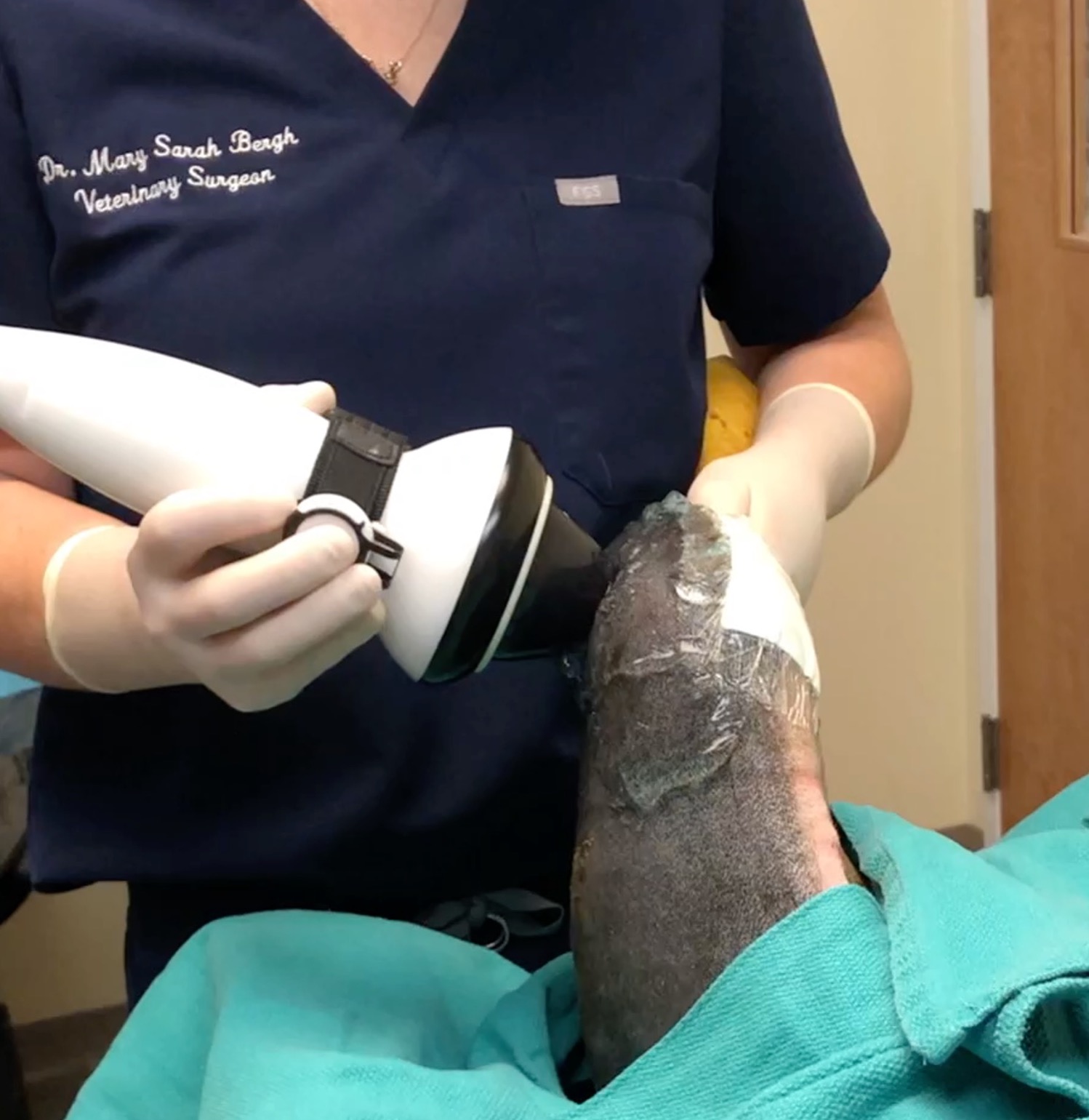
Appropriate postoperative care is critical to facilitate healing. We will provide a specific regimen based on your dog’s individual needs, but general factors include:
- Pain medications — At Midwest Veterinary Specialists, we take your pet’s pain seriously. Commonly, we will use several different oral and injectable pain medications to control pain and promote limb use after surgery. We also use a long-acting numbing agent at the surgical site to improve comfort.
- Exercise — Running, jumping, navigating stairs, and slippery floors should be avoided for the first eight weeks after surgery. Short, controlled leash walks are permitted. You should expect your dog to start bearing weight within two to three days after surgery, and their comfort and weight-bearing should steadily improve.
- Rehabilitation — Our veterinary professionals will devise a rehabilitation program for your dog to speed healing. Rehabilitation therapies can often begin the same day as surgery.
- Diet — Your dog’s dietary intake should be reduced during activity restriction to prevent weight gain. If your dog is overweight, we will formulate a weight loss strategy to reduce the strain on their injured joint.
- Rechecks — Follow up X-rays will be necessary eight weeks post-op to ensure your dog is healing appropriately.
TPLO is a great treatment option for many dogs suffering from CCL rupture. If you think your dog may have this condition, or if your dog is diagnosed with this condition, contact our Midwest Veterinary Specialists team, so we can determine if they are a good TPLO candidate.


